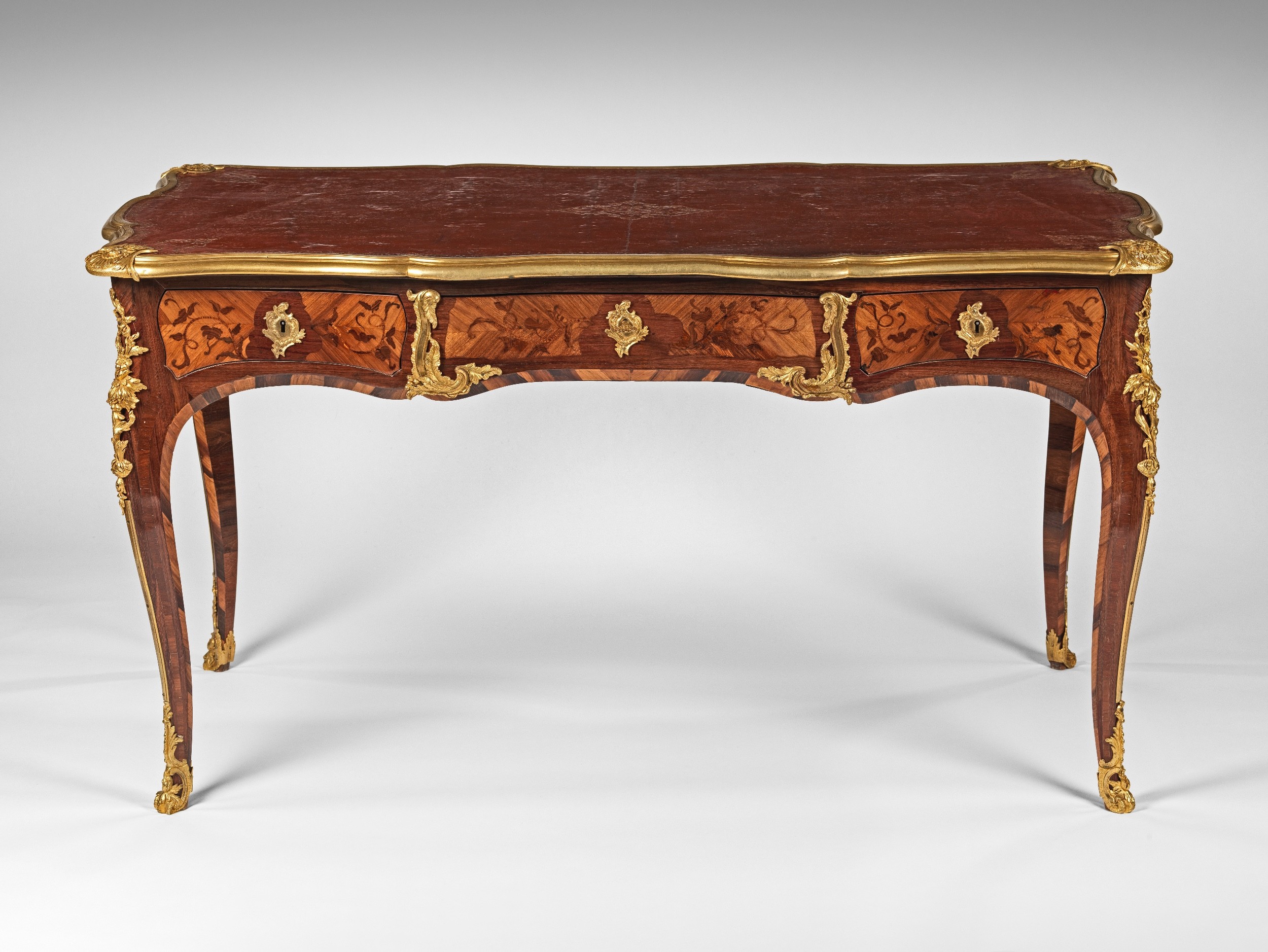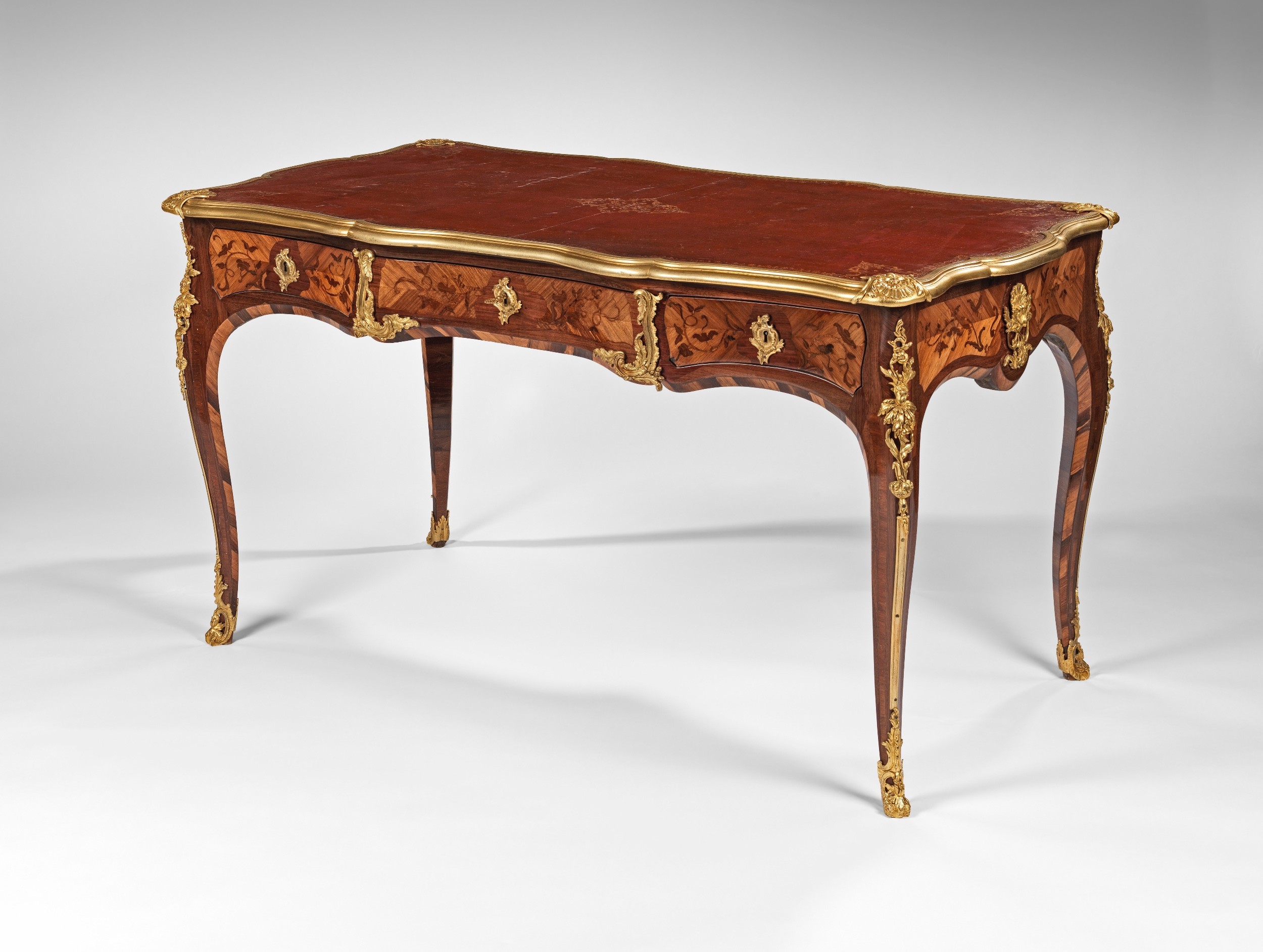

1750


The four mysterious initials of the stamp B.V.R.B. concealed a dynasty of ébénistes of Netherlandish origin whose identity was only uncovered in 1957. Although all used the same Christian name and surname, Bernard II van Risenburgh was the first to stamp his furniture using the monogram BVRB; he is now regarded as the greatest ébéniste of the reign of Louis XV and his work can be seen in almost every major museum that has French Furniture. He specialized in furniture decorated with panels of Japanese lacquer, which he first supplied to the French queen, Marie Leszczinska, in 1737. He was also celebrated for his furniture veneered with floral marquetry, usually made from kingwood and tulipwood. At the end of his career, he supplied the nobility with the novel innovation of furniture mounted with Sèvres porcelain plaques. BVRB's pieces can also be recognized by their gilt bronze mounts, which he designed himself. The novel forms of these mounts appear only on his works and help to distinguish his furniture from that of other cabinetmakers. Throughout his career he worked almost exclusively with the important marchands-merciers, such as Lazare Duvaux and Thomas-Joachim Hébert. As a result, BVRB had no direct contact with his aristocratic and royal clientele. He kept a workshop on the Faubourg Saint-Antoine, in a less fashionable section of Paris than those of the ébénistes Charles Cressent and André-Charles Boulle.
Edit your content here
| Dimensions | CM | Inches |
|---|---|---|
| Width: | 135 | 53 |
| Depth: | 74 | 29 |
| Height: | 74 | 29 |